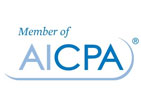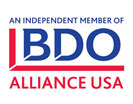Let's start by reviewing what federal law requires you to retain:
Posted in Payroll, HR & Benefits
A rule that a federal court suspended in August 2024 seems to be well and truly dead now. As the Society for Human Resource Management explained in a release, the DOL has withdrawn its 80/20/30 rule. This complicated rule, the SHRM noted, divided work into three categories: traditional tipped labor, supporting work preparing or assisting such work, and work that was unrelated to tipped work. Businesses could only apply the tip credit under certain circumstances, based on time spent and the specific categories. The details were complex — and became irrelevant thanks to a 5th Circuit ruling.
Posted in Payroll, HR & Benefits
As we approach 2025, it is essential for businesses to stay updated on recent changes impacting payroll, benefits, and compensation. This year brings several key updates, including an increase in the IRS standard mileage rate for business use, adjustments to 401(k) contribution limits, and a significant legal decision affecting overtime regulations. Below, we break down these changes and their implications for your payroll operations.
Posted in Payroll, HR & Benefits
It is more useful to contrast the distinct strengths and skills each of these groups represents. On one hand, lifers embody loyalty and rich experience. They have committed substantial time and effort to help their organizations thrive. Job hoppers, however, are often cultivated as a replacement source of fresh thinking at the cutting edge.
Posted in Payroll, HR & Benefits
The SECURE 2.0 Act aims to expand the ease of saving for retirement, to simplify the management of retirement plans, and, in general to improve financial security for American workers and retirees. The updated law includes new options for 401(k) and 403(b) employer contributions, adjustments to the required minimum distribution age for IRAs, and increased catch-up contribution limits. The act also has incentives to encourage employee enrollment.
Posted in Payroll, HR & Benefits
First quiet quitting, now quiet vacationing. What is going on? This is a good question with complicated answers.
Posted in Payroll, HR & Benefits
Companies and workers had to rapidly adjust and improvise during the first months of the COVID-19 pandemic. Now that work-from-home routines and policies have become more established, employers are creating policies to provide their remote employees with tools for productivity and comfort.
Posted in Payroll, HR & Benefits
According to the National Association of Background Screeners, 95% of U.S. employers use background checks when hiring employees. Background checks cannot look at medical history or genetic information, but they are legal for assessing a person's work history, education, criminal record, financial history, or social media use.
Posted in Payroll, HR & Benefits
Simple payroll errors are avoidable, but if you don’t pay attention, you could end up facing consequences that cost thousands of dollars in compliance penalties. Not only that but you might have to deal with unwanted attention on both you and your payroll department.
Posted in Payroll, HR & Benefits
On the surface, earned wage access is a simple, effective employee benefit; for a small fee — typically less than $5.00 per transaction — employees can access a portion of their paycheck before their actual payday. Many workers have minimal savings in the event of an emergency, and EWA can be a far less expensive alternative to high-interest payday loans.
Posted in Payroll, HR & Benefits



















